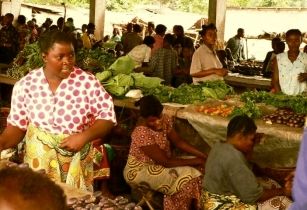Nearly 7.7mn people need emergency humanitarian aid, says FAO and WFP
In a new report released today, the Food and Agriculture Organization of the United Nations (FAO) and the World Food Program (WFP) are sounding the alarm: in the Democratic Republic of Congo, Nearly 7.7mn people are facing starvation in the face of rising violence and displacement, up 30 per cent from last year.
According to the analysis of the Integrated Food Security Classification Framework (IPF), between June 2016 and June 2017, the number of people facing "emergency" and "crisis" food insecurity (Phases 4 and 3 and The CPI), the pre-famine stage of the CPI and requiring emergency food and humanitarian aid, increased by 1.8mn from 5.9mn to 7.7mn.
In other words, more than one in ten people living in rural areas suffer from famine.
Hunger-related suffering is on the rise due to the escalation of conflicts, its persistence over time and the displacement of people in central and eastern DRC, mainly in the Kasai and Tanganyika regions, Where acts of violence have become widespread.
Last year, nearly 1.4mn people were forced to leave their homes.
According to the report, the humanitarian situation has deteriorated again following the invasion of legionary caterpillars and epidemics of cholera and measles.
In the conflict-affected regions, more than 1.5mn people are faced with "emergency" food insecurity (IPC Phase 4), which means that Have no choice but to sell everything they own, to skip meals or to reduce their servings of food.
In some of the areas affected by hunger, between 50 and 80 per cent of the population struggle to make ends meet and find food. In some areas, some people eat once a day and their meals (based on maize, cassava and potatoes) do not meet their daily nutritional and caloric requirements. In the last three months, food prices have increased. In some cases, diets are confined to starchy foods and leaves.
Others are turning to other options such as reducing the number of meals or skipping meals. Some sell their belongings, borrow money, send family members to beg or eat elsewhere.
Chronic malnutrition affects 43 per cent of children under the age of five, or more than 7mn children in the DRC.
The massive population displacement - 3.7mn people in the DRC - and the steady flow of refugees from neighboring countries are putting strain on already limited resources, as well as the alarming spread of legionary caterpillars, which affects 50 of the 145 The DRC, this has worsened food insecurity. This is especially the case in areas with high levels of poverty, malnutrition and chronic food insecurity.
This deterioration of the situation particularly affects the inhabitants of the Kasai region.
FAO and WFP are urgently calling for the provision of vital food and nutritional assistance to combat malnutrition. It is also necessary to distribute seeds and tools so that farmers can plant again and rebuild their livelihoods.
In conflict-affected areas of Kasai and Tanganyika, FAO is providing plant seeds and hand tools to boost agricultural production as soon as possible and increase the availability of nutritious food in host communities and displaced people. The livelihoods of these people represent their best means of coping with hunger and disasters. In 2017, FAO intends to assist 2.1mn people in the DRC to fight hunger, restore food production and enhance resilience of livelihoods.
In the DRC, WFP continues to work for the most vulnerable. UNHCR has deployed staff to Tshikapa and central Kasaï, the two provinces most affected by the conflict, and will distribute food within the next few days. In other parts of the country, WFP is providing logistical capacity, particularly in terms of air and road transport, fuel and storage, to serve the humanitarian community as a whole.





